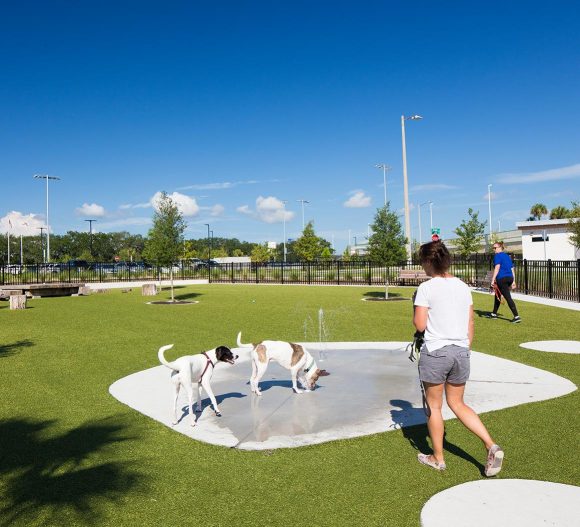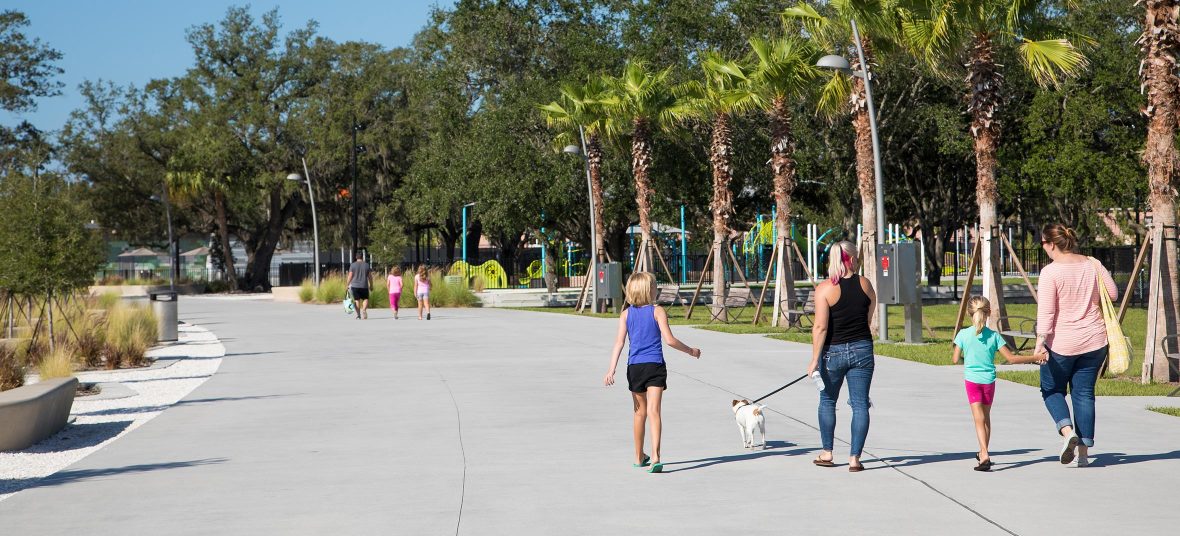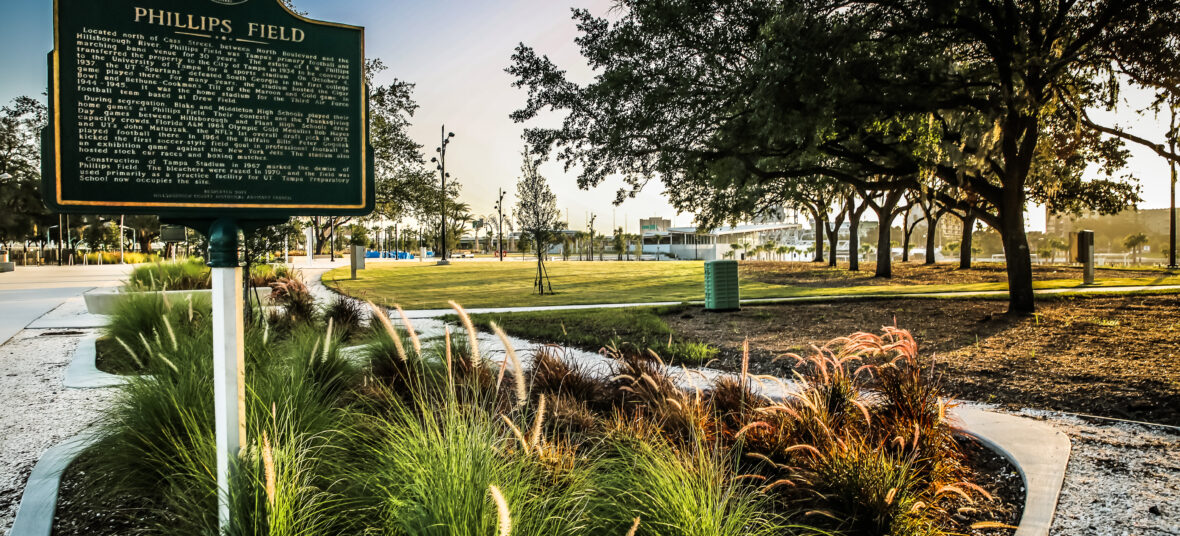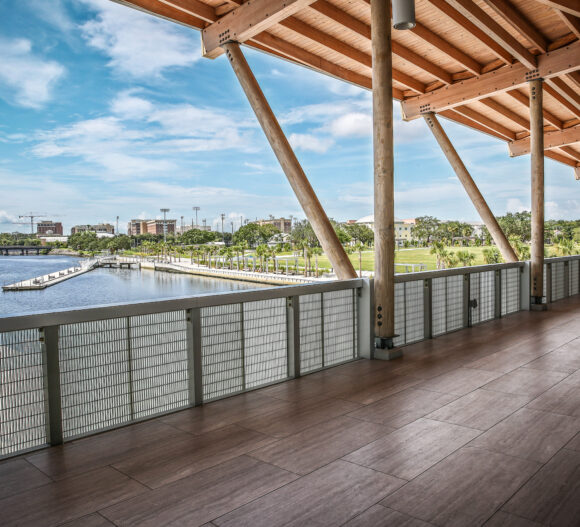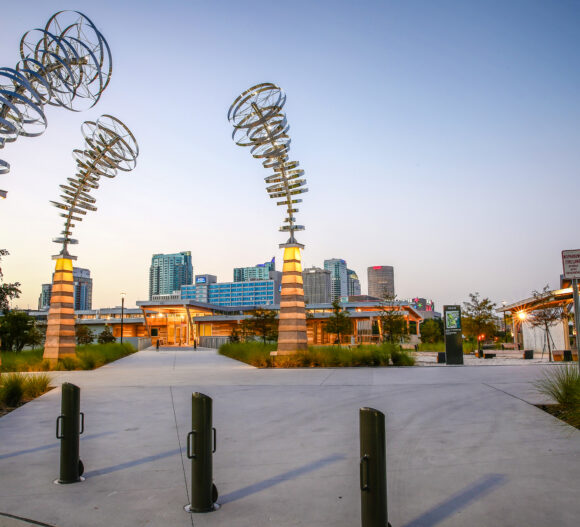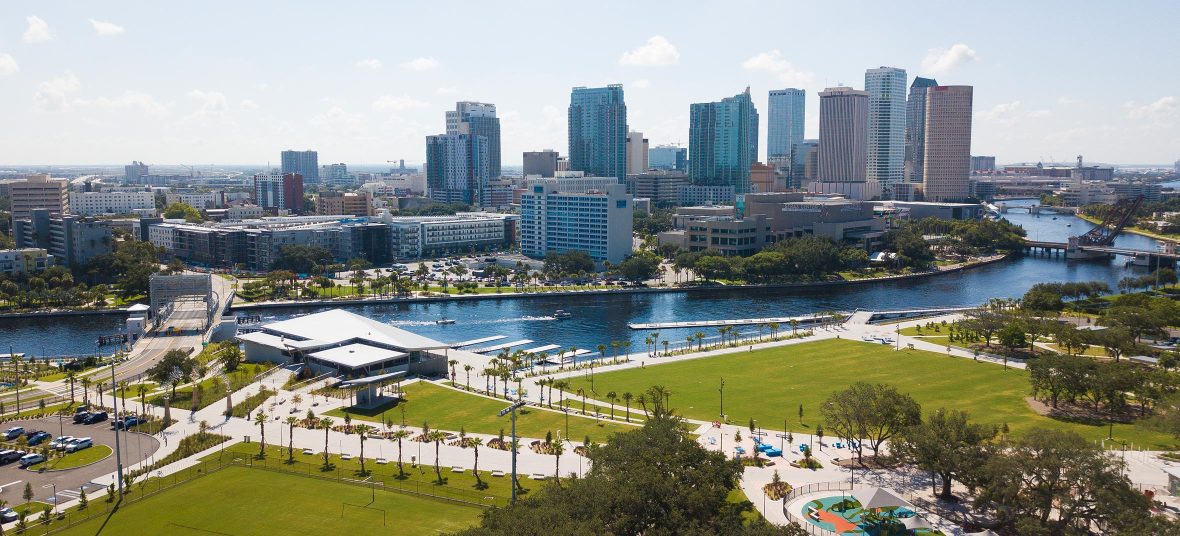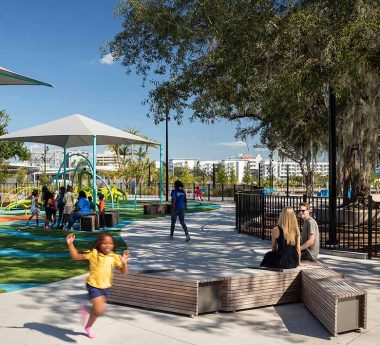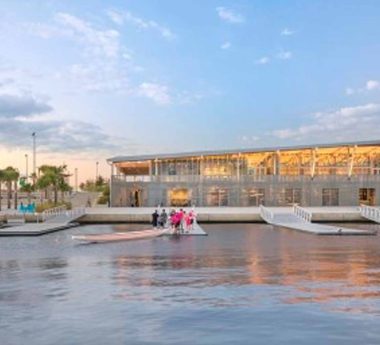Rebuilding Connections and Restoring Trust
Julian B. Lane Riverfront ParkTampa, FL—USA
When Interstate 275 was developed in the 1960s to improve connections between Tampa, St. Petersburg and other parts of Florida, Tampa’s Roberts City neighborhood – an historic Black neighborhood serving as a center of African American living, jobs and culture – was razed, and an important community’s connections were severed rather than improved. In 1977, Riverfront Park had been developed in an attempt to give the community a place to gather, but (despite its name) the park didn’t address the Hillsborough River and was consistently underutilized, ultimately falling into disrepair and becoming unsafe.
A new strategy was essential; yet, for decades, this West Tampa community had grown resentful of unsuccessful efforts done in the name of urban renewal. So when Civitas and W Architecture and Landscape Architecture were hired in the mid-2010s by the City of Tampa to co-design a new 25-acre park on the west side of the Hillsborough River, naturally there was skepticism. Named after the former Tampa Mayor who’d played a role in the 1963 integration of city’s schools, Julian B. Lane Riverfront Park would be the first project to be implemented from the InVision Tampa plan – the master plan to revitalize downtown Tampa and reorient its city center around the river.
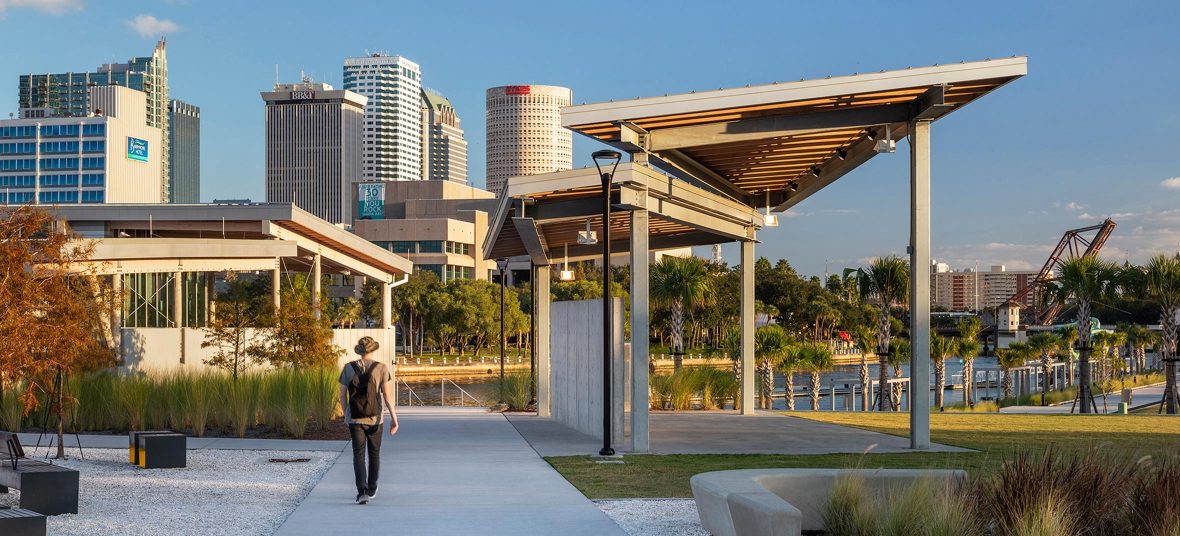
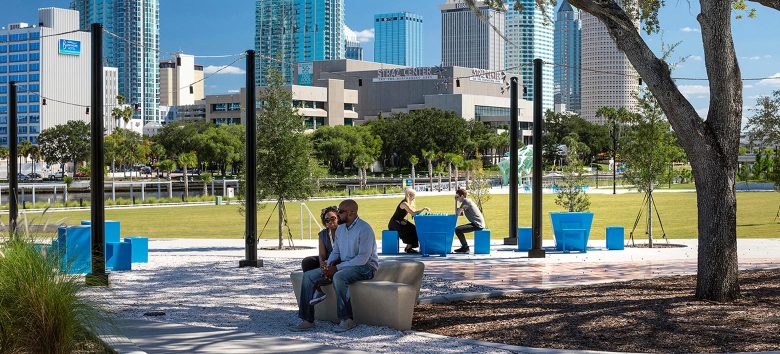
Getting It Right
The community’s history made it important to really listen and get to know people and build trust. To get it right, the design team leaned hard on Civitas’ long-established practice of engaging the public in each design project.
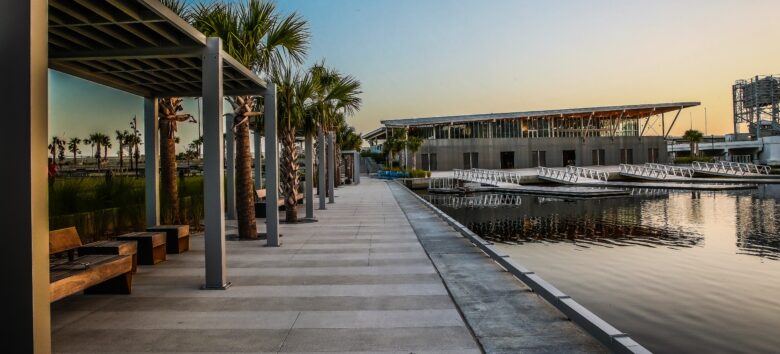
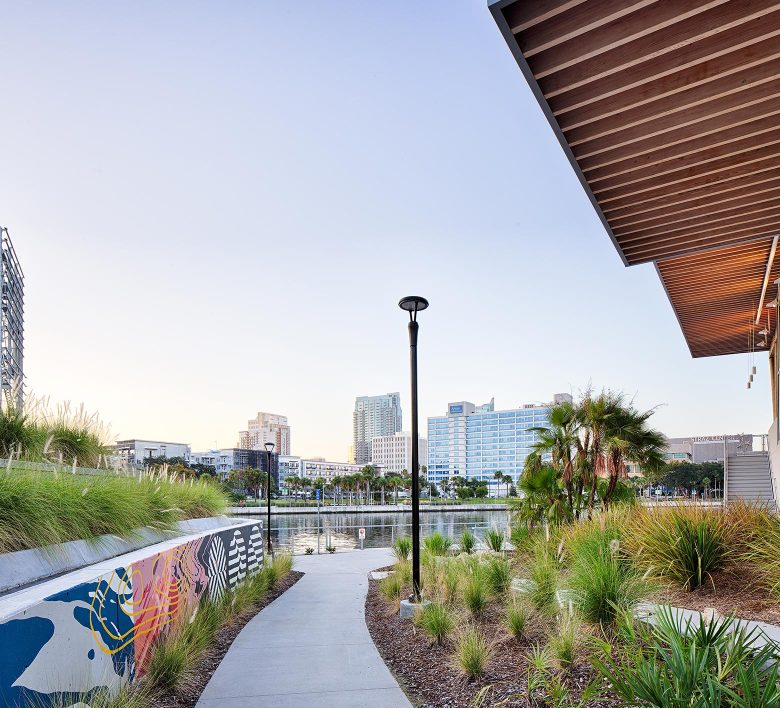
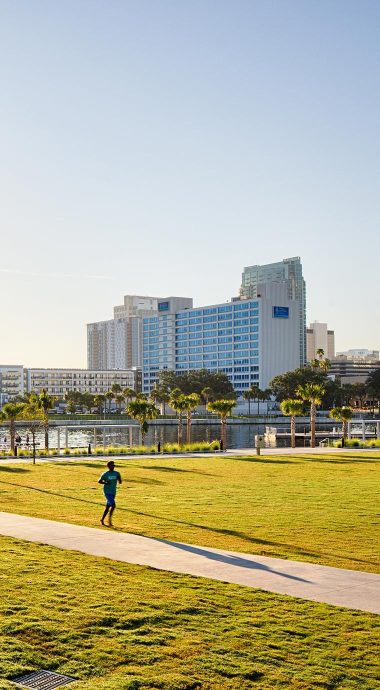
Historically Significant Public Input
Forty personal interviews and a series of public meetings, each attracting an average of nearly 200 people, allowed the real story of the park to emerge: the lingering emotions and latent distrust between the community and the city. Older residents who’d grown up in Roberts City remembered fishing, boating and playing along the Hillsborough River and lamented losing that connection when the interstate cut through. Stories of aggressive racial displacement and police brutality rose to the surface, and a feeling of helplessness was clear.
The engagement process ultimately garnered more public input than any other project in the history of the Tampa recreation department, as the community shared their needs and desires for greater safety and accessibility, public access to the river, sports and fitness facilities, family-friendly picnic sites and play spaces, a great lawn for events and activities, and respect for the community’s history.
-
25Acres
-
40Personal Interviews
-
200People per Public Meeting
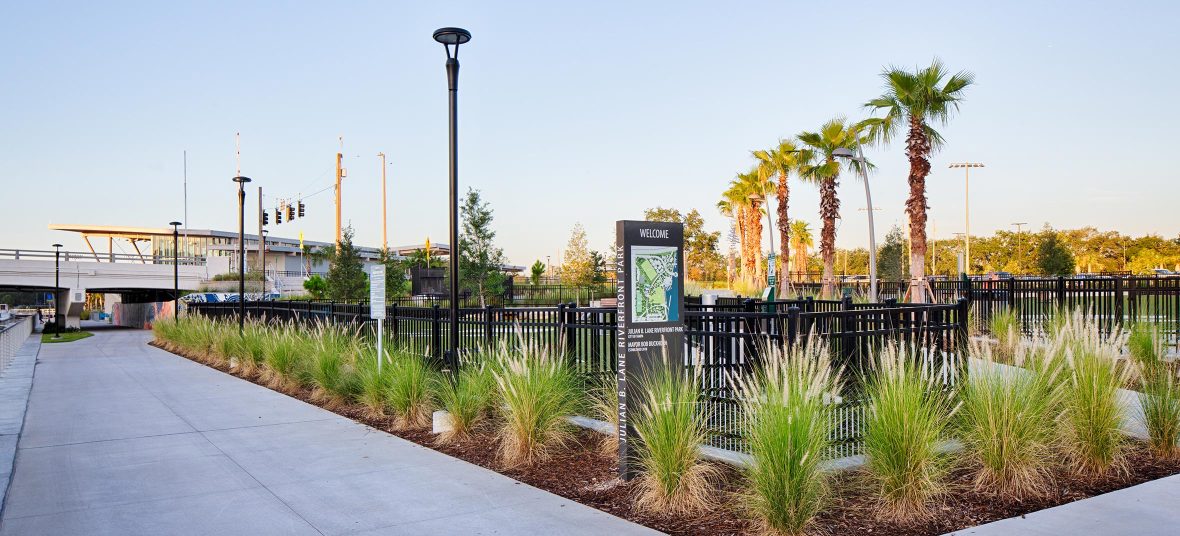
They wanted to feel connected again. The design team listened and, as a result, created a park that brought together three community-driven ideas:
- A major emphasis on picnicking and families, including a large playground;
- First-class basketball, tennis and football facilities;
- And, a new River Center with a public boathouse on the ground floor and a community center on the second floor.
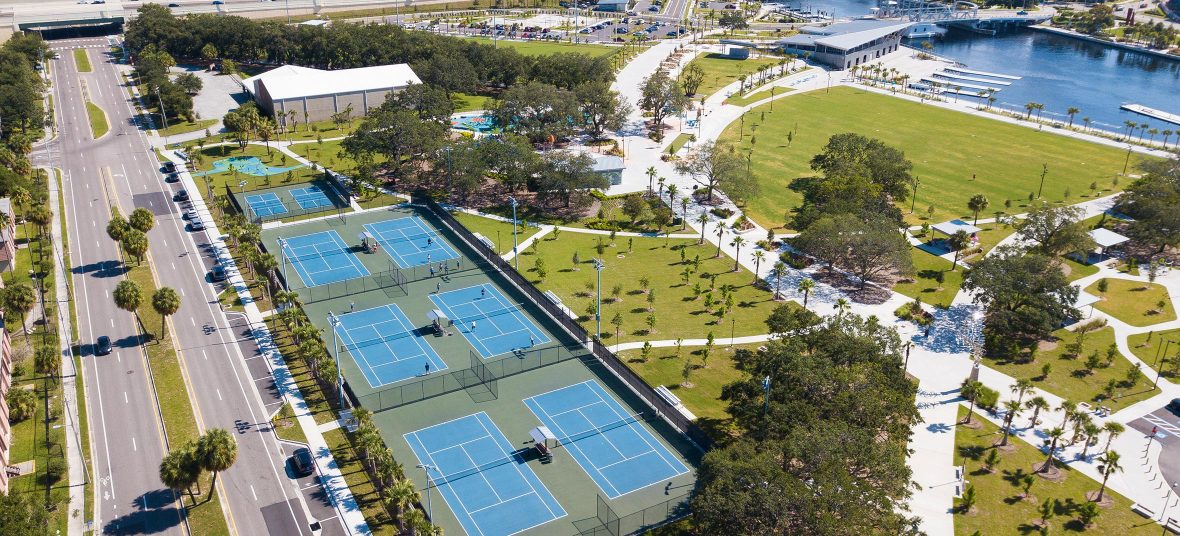
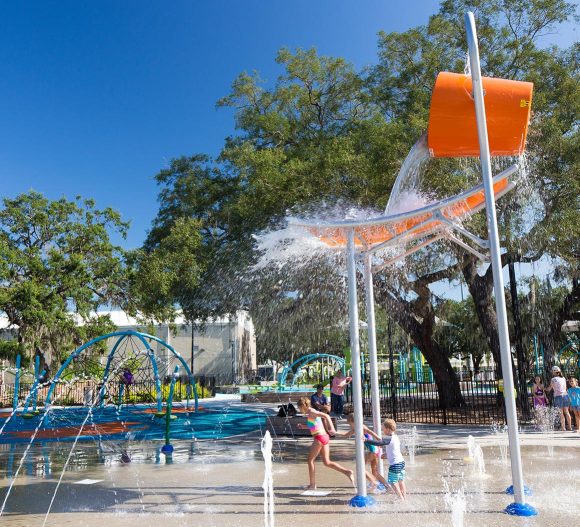
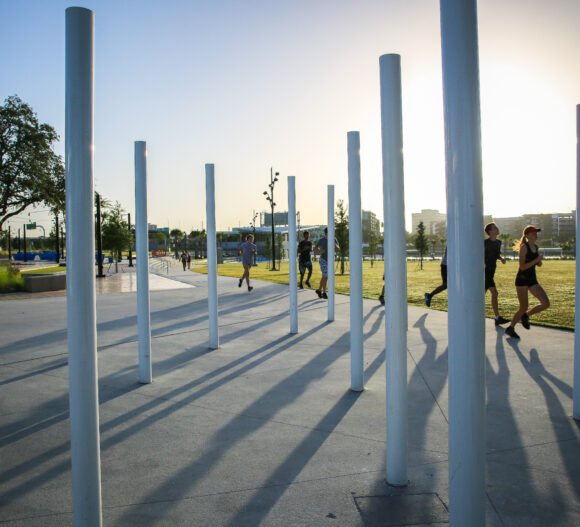
Designed for the Whole Community
Riverfront Park was transformed into a vibrant and sustainable public space where people can come together, and its design was directly responsive to public input, providing space and programming for all ages as well as better connections to adjacent neighborhoods and downtown. Amenities include picnic areas with pavilions and grills, a community center, history walk, community performance pavilion, events lawn, splash pad and shaded playground, game tables, recreation courts and fields, public art, a dog park, and parking.
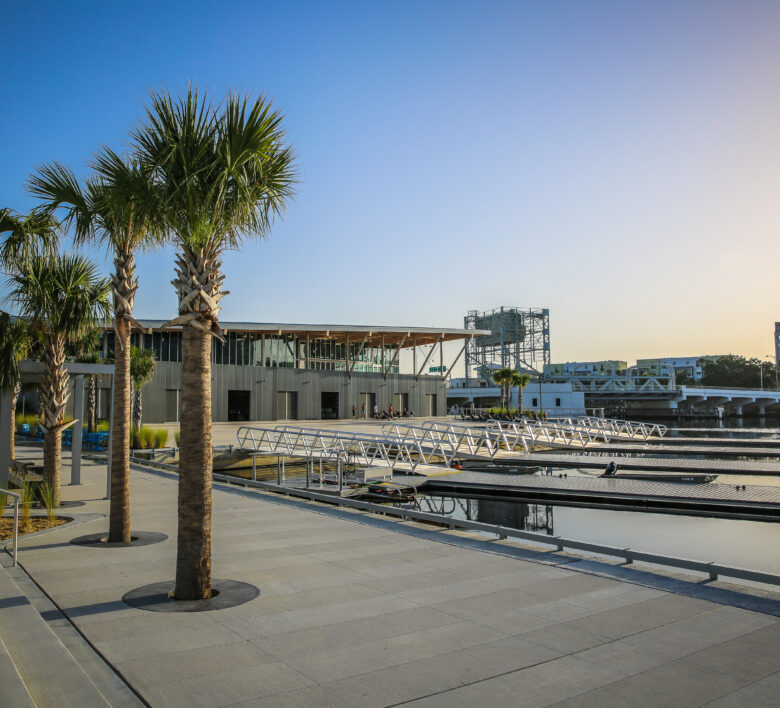
Restoring a Waterfront Asset
Just as significantly, the Hillsborough River was reengaged as a community asset with a waterfront promenade, a floating dock, and a calm water harbor. To achieve this, the seawall was moved back into the park, bringing the river closer to the people and creating a cove that facilitates kayak and paddle board rentals and that’s safe for beginner instruction. The new boating center also serves as a home for crew boats, kayaks, paddle boards, canoes and dragon boats.
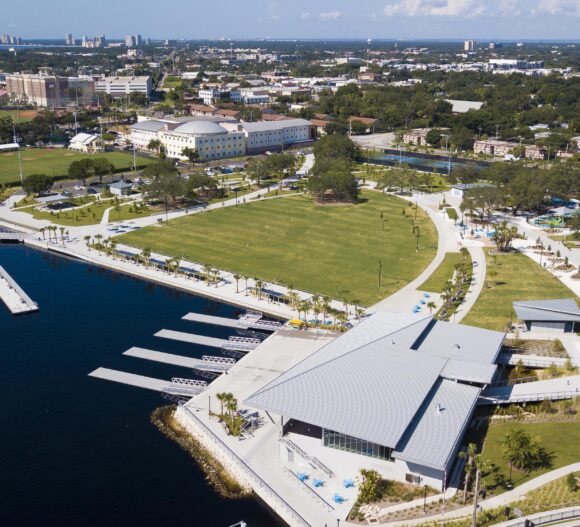
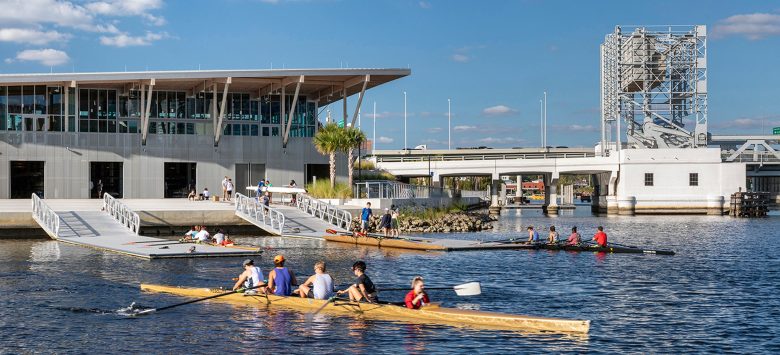
Economic Stability
The park plays a role in the community’s economic and environmental stability, too. During construction, many of the park’s features including pavilions, shade structures, benches and game tables were locally manufactured in order to keep money and jobs in the community; and amenities are designed to support ongoing revenue generating activities and events.
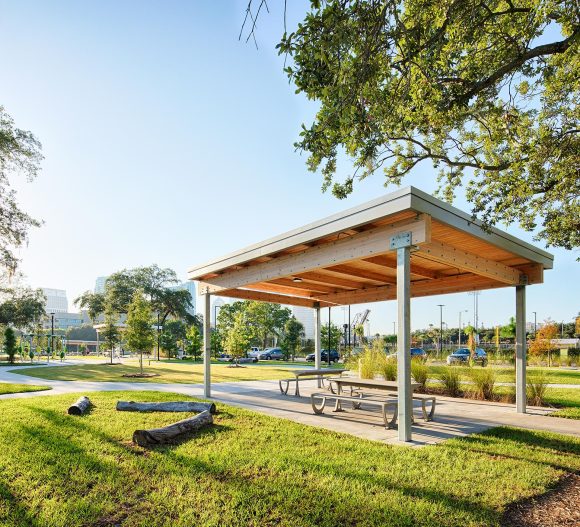
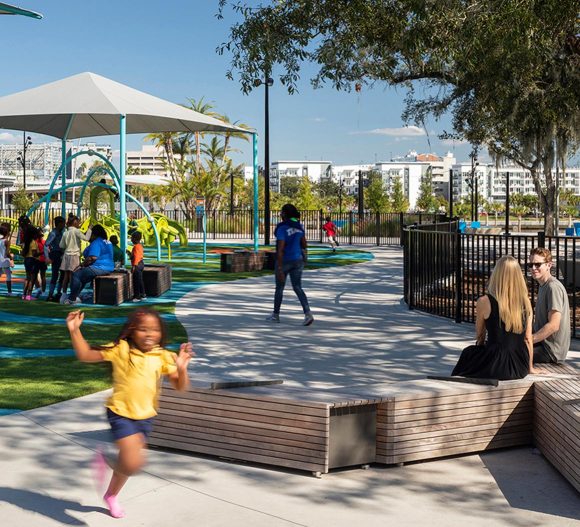
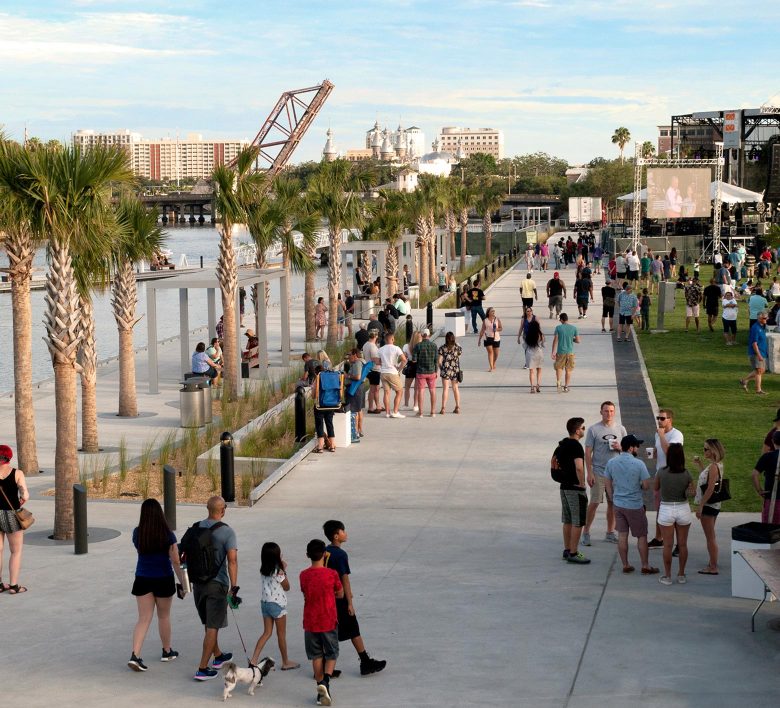
Ecological Stability
The site’s natural ecology was restored using sustainable strategies such as stormwater management – capturing the water in vegetated swales and providing continuous water filtration in a trench that forms the edge of the great lawn and serves as a backdrop to the waterfront promenade. Over one hundred mature oak trees were also preserved, and new indigenous trees and grasses were added to the site.
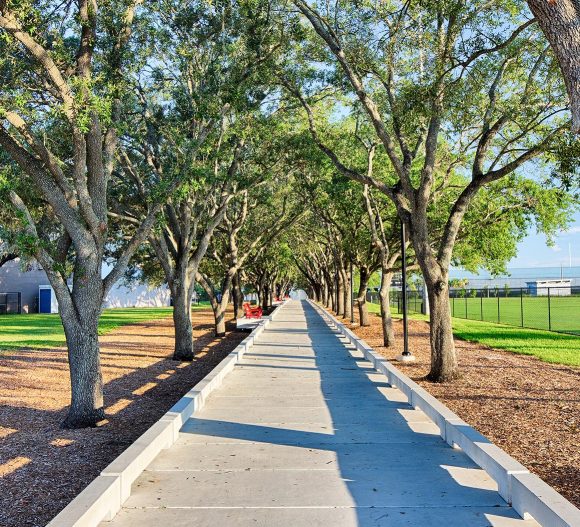
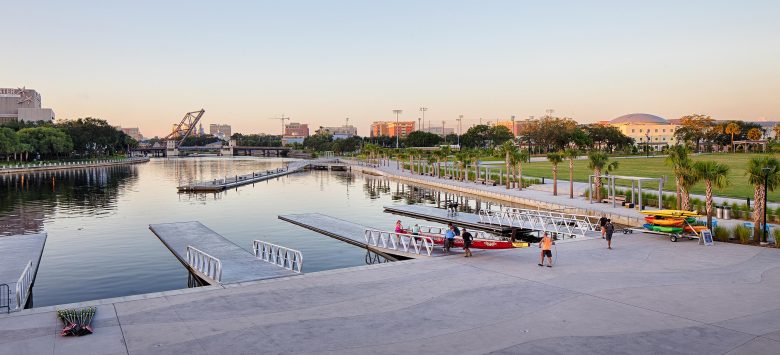
A Place for Residents
Since opening in 2018, the Julian B. Lane Riverfront Park has enriched the community and the water by engaging both – connecting them to each other – as a source of pride, recreation, relaxation and health. The park has sent a strong signal to West Tampa residents that the city cares and supports community reinvestment. Residents once again feel they have a place of their own that not only celebrates their history but also provides the ability to participate equally with other Tampa neighborhoods in sharing the city’s rich resources.

